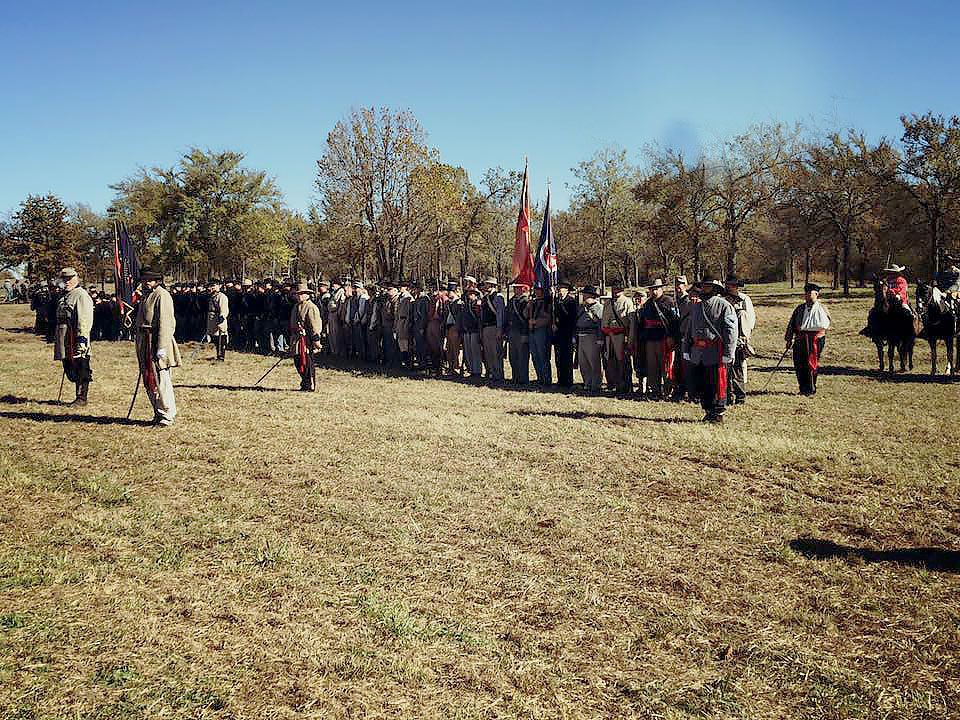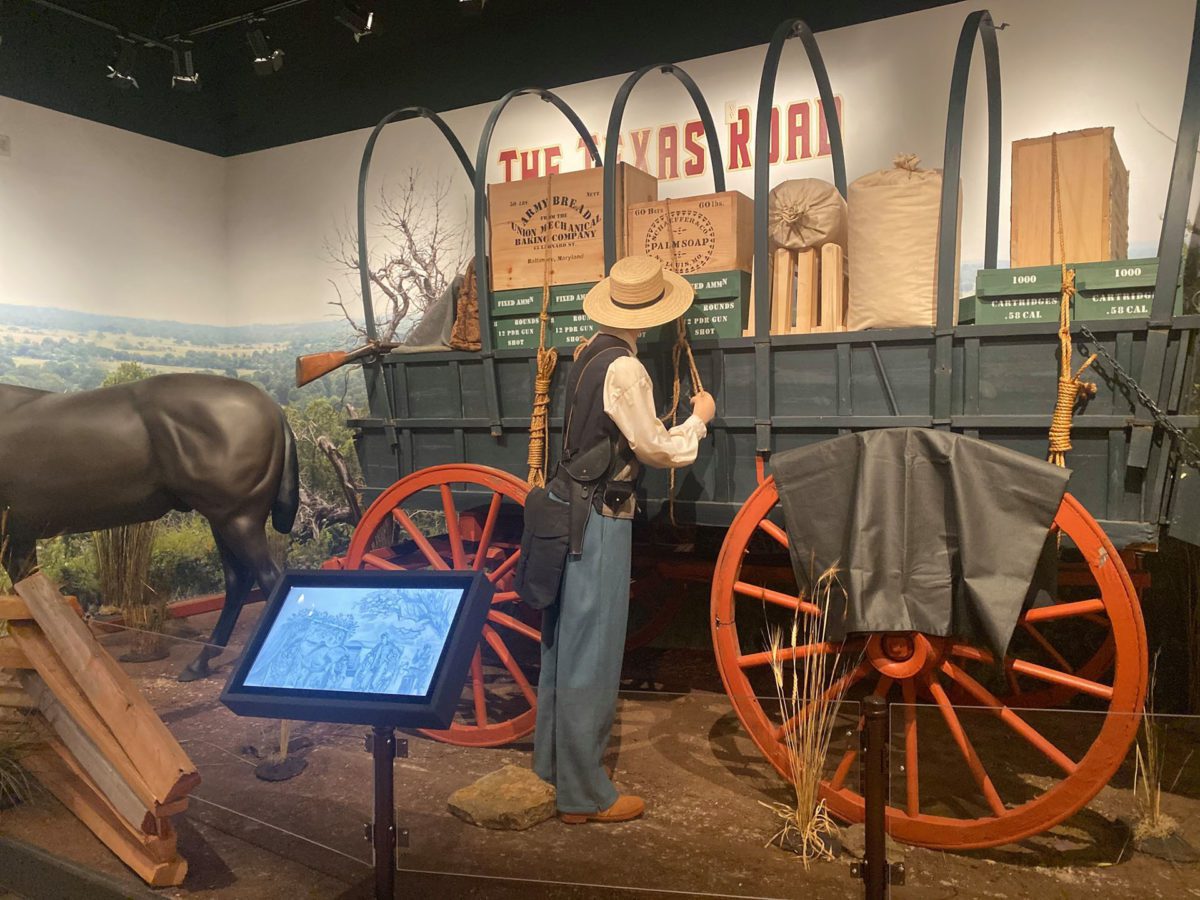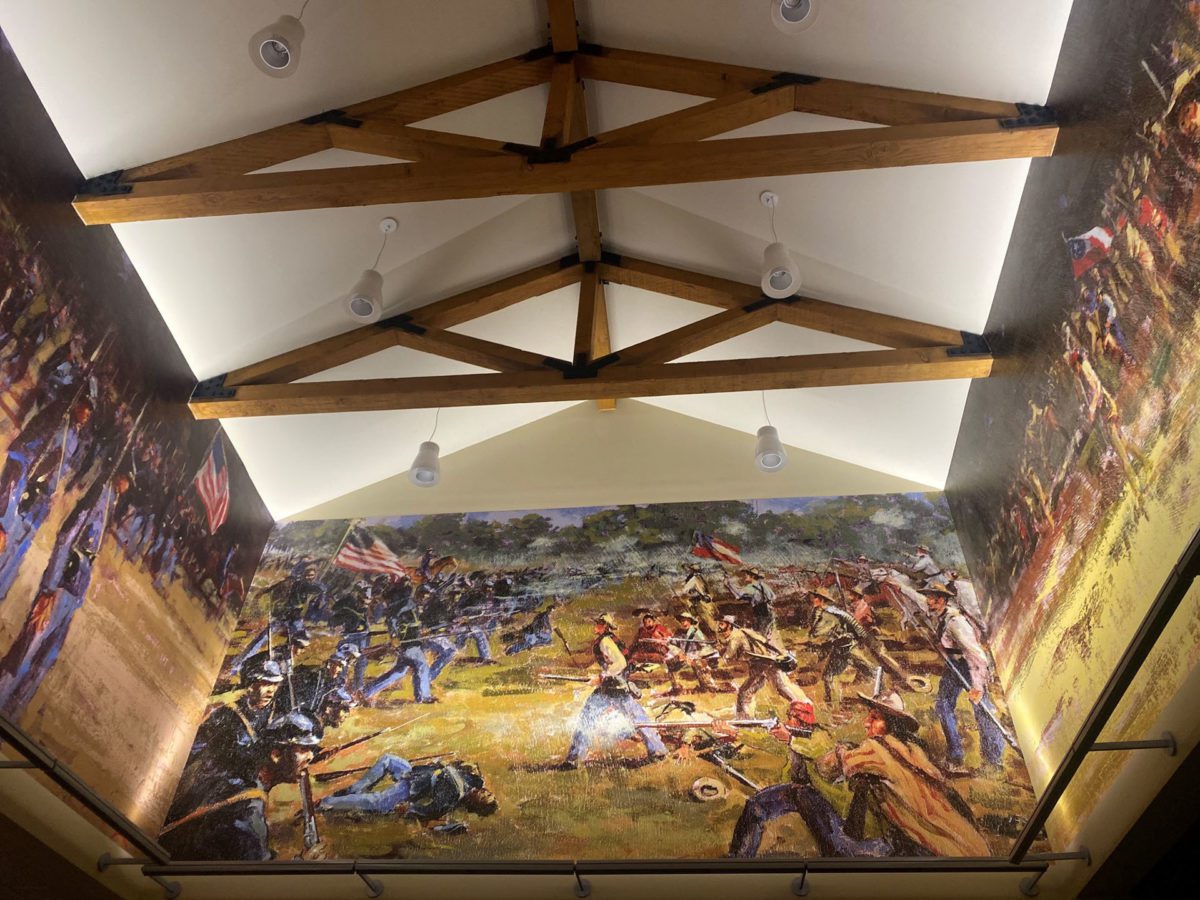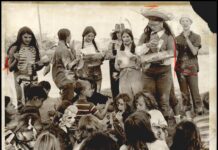The Civil War in Indian Territory took a devastating toll on the land and its people. More than 107 documented hostile encounters took place in what is now Oklahoma, and none had more impact and long-lasting consequences as the battle at Honey Springs.
On a hot July day in 1863, approximately 9,000 men were at Honey Springs, including Maj. Gen. James G. Blunt’s First Division Army of the Frontier – fighting for the Union – and the Confederate Indian Brigade, led by Brigadier Gen. Douglas H. Cooper. The day went to the federal forces and opened a route to Fort Smith, Ark., for the Union.
Union victory at Honey Springs led to federal control of Indian Territory for the remainder of the Civil War, according to Adam Lynn, director of the Honey Springs Battlefield and Visitors Center in Rentiesville. The battle took place just weeks after Union victories in Gettysburg and Vicksburg.
“So both sides would have wanted to be on the offensive for different reasons,” he says. “They would have known about those victories.”
But gaining control of Indian Territory isn’t the only thing that sets this battle apart. Lynn shares that this engagement is thought to be one of the most culturally diverse conflicts to take place during the Civil War, as it included the First Kansas Colored Volunteer Infantry Regiment fighting for the Union forces.
“Their story is interesting, because they were the very first African American regiment to fight in the entire Civil War,” says Lynn. “[Honey Springs] was their fourth conflict and they played a large role in Union victory here.”
There were also ten American Indian nations fighting on both sides at Honey Springs, as splits and rifts had occurred within the tribes.
“This battle, and really the overall story of the Civil War in Indian Territory, had a devastating effect on the American Indian populations that resided [there]. They had made lives for themselves between the removal years and the opening of hostilities during the Civil War and they were entirely devastated,” says Lynn.
A three-day reenactment of the Battle of Honey Springs will be held in November at the battlefield. Attendees can learn more about the Civil War in Indian Territory from living history performances, shop for period souvenirs and clothes, and watch as the battle is performed.
The Honey Springs Battlefield and Visitor Center is open year-round and includes exhibits detailing the Civil War in Indian Territory. The battlefield consists of six walking trails and more than 50 interpretive signs.
“You can literally walk the footsteps of the soldiers and learn about what happened on the battlefield – where it happened, as it happened,” says Lynn.

































